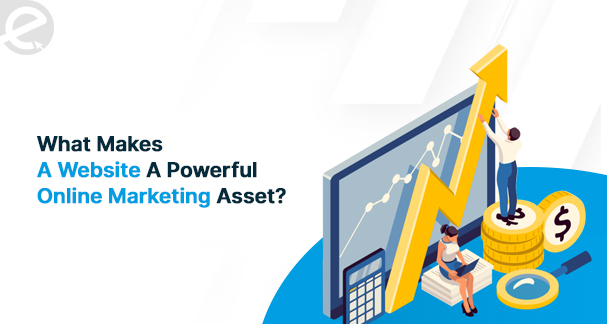
We Develop Websites Keeping Marketing in Mind
How To Fix the Common Threats to A WordPress Website?
 Dec. 08, 2022, 11:23 AM
Dec. 08, 2022, 11:23 AM- By Eclick Softwares and Solutions

A hacked website has the immense potential of seriously damaging website revenue and reputation. Hackers invest all their talents in stealing user information, and passwords and installing malicious software. Worst of all is the owner paying the ransomware to hackers in the course of regaining access to the website.
A hacked WordPress website suffers from –
• Uploaded files with malicious code or PHP backdoors to the server
• Existing files on the server suddenly modified, like theme files
• Code injected into the WordPress database
• Users with administrative privileges added to the WordPress database
• Several posts and pages were published with spam code
• Site redirected to malware sites
As a wise website owner, you will have to say yes to custom WordPress development in case your website is vulnerable to security. Only then can the technology be updated and vulnerabilities be fixed with the latest security.
How To Strengthen A WordPress Site By Addressing Security Breaches To Prevent WordPress Hacks or Cyber Attacks?
We have compiled all the updated relevant information for securing the WordPress website to ensure full protection from new vulnerabilities.
1. Adding A CDN–Level Firewall
Attack from bots and related malicious software on website brings serious injuries. The servers get overloaded with requests due to distributed denial of service (DDoS) attacks. Then the server crashes with the site becomes inaccessible.
A CDN-level firewall identifies and filters out suspicious traffic before they come near the server. This additional security layer protects your website from DDoS and related bot attacks.
Further, the website performance improves through caching static content and sending them quickly to the visitors.
2. Regularly Changing the Login Page URL
When you change your login URL regularly then hackers are prevented from having an easy access to your website. Hackers then face utmost difficulties to guess and forcing their efforts on your website. Other than changing manually, use the plugins for the overall management.
3. Adding A JavaScript Challenge To Login Page
Only authorized users can access the WordPress website when a JavaScript challenge is added to the login page. On being enabled on the page, the JavaScript will function as the security check for validating the browser's request to execute the JavaScript. In this challenge, users need not interact. The browser takes just 5 seconds for processing the JavaScript.
4. Limiting the Login Attempts
The allowable login attempts is to be limited to prevent hackers from forcefully gaining access to accounts. Failing to guess your password, the hackers will be prevented from having access to your account, despite having your username.
Even your account will be protected from being locked in case anyone attempts to guess your password.
5. Securing All Passwords and Enabling Two–Factor Authentication
Set difficult passwords and enable two–factor authentication. Hard-to-guess passwords of 8 characters long with mixed letters in upper case and lower case, symbols and numbers work best.
Two-factor authentication strengthens the extra security layer by asking for a second identification form before you are logging in. Hackers will naturally find it tough to gain access to your website, regardless of knowing your password.
6. Removing XML–RPC.php
XML-RPC.php allows anyone to access your WordPress site remotely, and the hackers snatch the opportunity to inject malicious codes or entirely take over your website. Removing the file by connecting your website through FTP and deleting the file from the server and updating the .htaccess file prevents any further access to the file.
7. Removing WP and Plugin Versions
To exploit the vulnerabilities, hackers will even look at the WordPress and plugin versions you are using. Now the outdated versions have security issues that can be easily exploited. So, WordPress installation and all plugins should be up to date.
8. Reducing the Plugins
Setting up a lot of plugins, rather than unused and duplicate plugins threatens the WordPress site security. The reason is each plugin is a potential entry point for hackers.
So, when the plugin counts are reduced on a WordPress site, the security risks go down. Site performance improves when the server has less number of requests to process.
9. Setting Up Auto-Update On Plugins
By using WordPress' native auto-update feature, all the installed plugins and themes can be updated. The plugins and themes handling sensitive data, like credit card information and personal records have to be updated. Even auto-updates ensure all the installed software are in the compatibility with WordPress' latest version – it improves website stability.
10. Checking Open Ports on the Server
Open ports on the web server create security vulnerabilities that the hackers wait to exploit. By running a Nmap scan, the vulnerable ports on the server can be found. Consult the hosting service providers for working with the discovered open ports to close or filter them. Best and safest is working with the notable WP-managed provider who ensures locking down their ports.
11. Properly Setting Up SSL
As a crucial part of website security, SSL certificates encrypt communication between a website and visitors. Intercepting data becomes tough for hackers. But the SSL certificates should be properly configured to prevent the website from being exploited due to potential vulnerabilities. Only strong cipher suites should be used since hackers can never then crack the encryption.
12. Using HTTPS for Encrypted Connections–SSL Certificate
Installing an SSL certificate and running a website over Hyper Text Transfer Protocol or HTTPS allows the browser or web application to be securely connected to a website.
13. Adding the Security Headers
Malicious code injection is prevented by security headers that even eliminate cross-site scripting attacks. By adding them, the payload-based attacks are blocked which reduces the website's chances of being malware compromised. Add these security headers to the website –
• X-Content-Type-Options
• X-Frame Options
• Cross-site Scripting (XSS) Protection
• Referrer Policies
• HTTP Strict-Transport-Security
14. Setting Up Daily Backups
There is always a risk to lose data due to hacking, power outages and unexpected events – that is why daily backups are needed for restoring your website in case the site has to compromise. Using a WordPress plugin is the best way to create backups as well as working with a web host taking daily backups automatically.
15. Running Final Security Tests
In the end, run a final security scan for checking for any vulnerabilities likely to have been missed. Different security scans, in paid and free forms are available. Choosing the right one is your decision, but you will have to scan using a comprehensive security scan. Look at the outcome once the scan is done. In case, any vulnerabilities are noticed, fix them right away.
So, how to strengthen your WordPress security and beat the hackers has all been discussed. Indeed, WordPress is popular but easier too for digital attacks. Hence, practising good security while setting up a WordPress site is imperative and forgo risking the well-being of your site.
Related Blog
- By Eclick Softwares and Solutions
- November 21, 2024
Why Good UX Design Mean B ...
UX creates a verified impact on CRO for a website. The users ...
Read More- By Eclick Softwares and Solutions
- November 11, 2024
How Important is a Websit ...
Where the customers land and browse to find their needed pro ...
Read MoreSearch Blog...
Recent Posts
Eclick Services







